The past week has been bountiful for photographing objects in the night sky. These objects include Mercury, Venus, Mars, the Moon, and the Zodiacal Light.
In mid-March the planet Venus was an evening object but was dropping closer to the horizon each evening. At the same time, Mercury was rising higher each day. On 18 March 2017, they were roughly side by side and presented an interesting spectacle in the evening twilight.

The following night I returned to Kachina Wetlands but later in the evening to capture the Zodiacal Light. The Zodiacal Light is a faint, roughly triangular, diffuse white glow seen in the night sky that appears to extend up from the vicinity of the Sun along the ecliptic or zodiac.
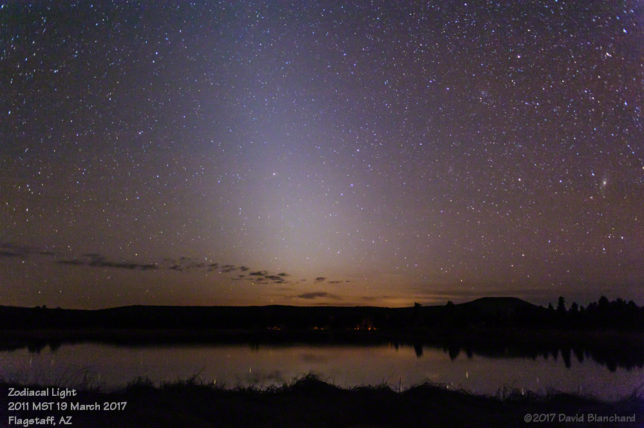
A week later I attempted the same photograph except using an ultra-wide angle lens (i.e., 16mm focal length) to capture the Zodiacal Light as well as the constellation Pleiades in the upper portion of the cone of light.
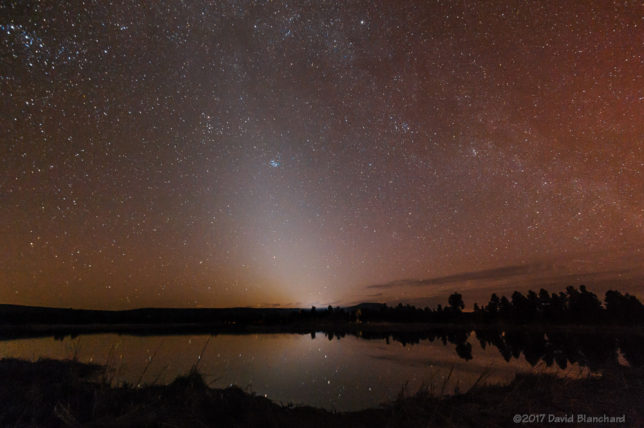
A few days later, the moon had reappeared in the evening sky. With just 1.4% of the disk illuminated it can be difficult to see. Making it much harder was the showery weather and abundance of clouds. But just before the moon set behind the trees it was visible in the gap below the clouds and the horizon.
A bonus was the very nice sunset colors reflected in the waters of Lake Mary while waiting for the moon to make an appearance.

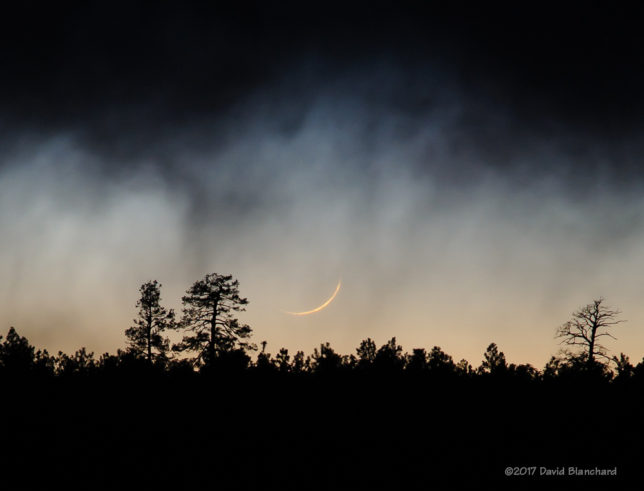
One day later, I tried again. This time the skies were clear and it was possible to capture an image with the 3M’s: Mercury, Mars, and the Moon. While waiting for the sky to darken enough for the planets to become visible I was able to capture an image of the moon with sunset colors still visible.
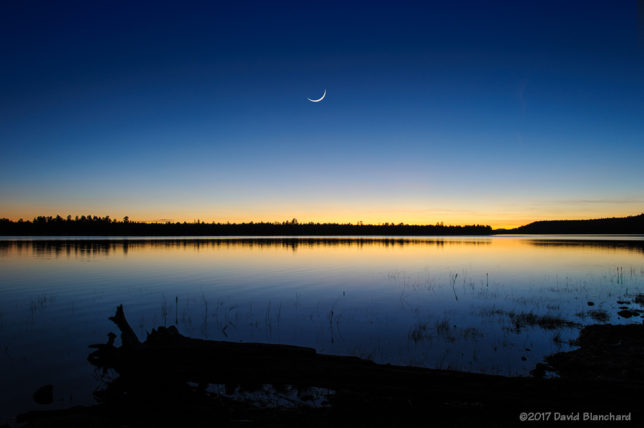
As twilight faded away Mercury and Mars became visible and the triplet made a triangle in the western sky.
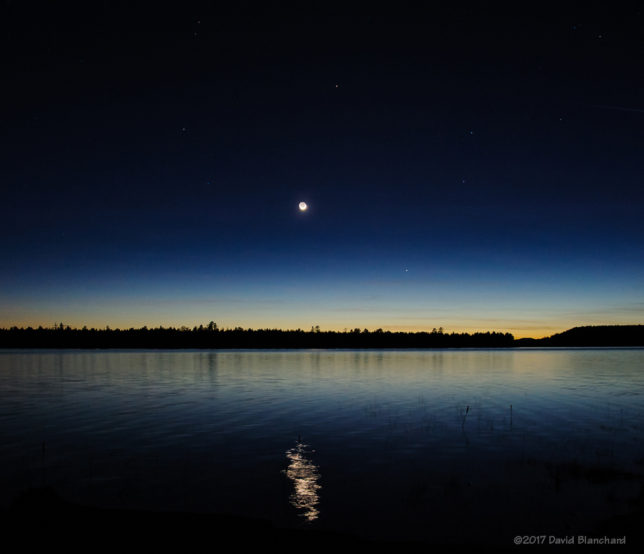
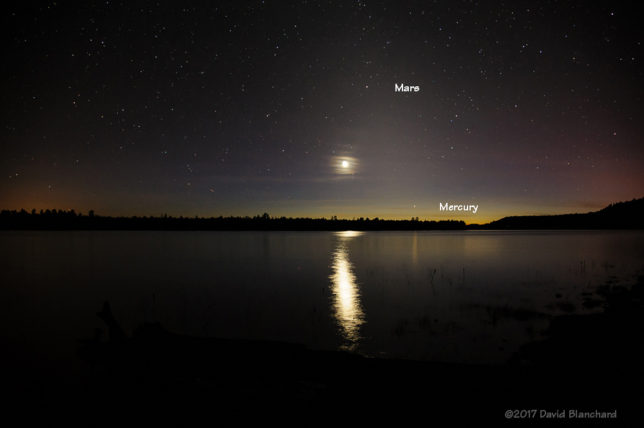
An active weather pattern is in place across the southwest at this time and it may be several days before the skies become clear again.